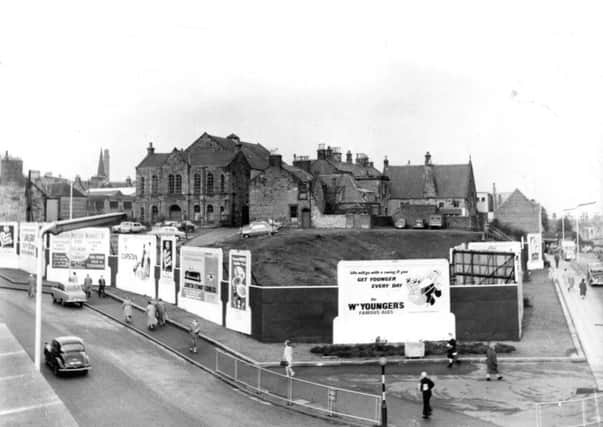Memories of Falkirk's east end


The east end of the High Street could hardly be more different. You don’t have to have lived here for all that long to remember the bulldozers removing the unloved Callendar Centre and, if you’re as old as me, you will have walked the celebrated Silver Row which disappeared in the early 1960s.
This area was once known as Wormet Hill though most of the ‘hill’ gradually disappeared as tons of gravel were removed for building works. You can get some idea of how high it used to be by looking over at the Storm Nightclub (formerly Doak’s) which is built on the slope of the old hill. Before the removal, the ground known today as the Callendar Riggs, was the Falkirk horsemarket accessed from the High Street though a pend called the Horsemarket Lane which stood to the right of the Poundstretcher store, formerly occupied by Alexanders and the Red Lion Inn.
Advertisement
Hide AdAdvertisement
Hide AdThe most famous of Falkirk’s disappeared streets, the aforementioned Silver Row, ran from the junction of Bank Street and Manor Street up the hill to where it came to an abrupt end at what we called the sandy hole. In earlier centuries it had carried on down to meet the High Street near the east end but that part consisted mainly of houses deemed unfit for human habitation and they were demolished in the 1920s.
Fortunately the bit that survived had most of the interesting buildings. At the junction with Manor Street on the right was the Masonic Arms, known to everyone as the ‘Gluepot’ where, according to one lady, “if your man went in there he was stuck for the night”. On the opposite corner was Falkirk’s main pawn shop, Smellie and Weirs and further up the hill, on the left, St Francis Primary School. The front building had been added around 1900 to the original small school building which looked more like a church and faced the Callendar Riggs. Opposite the school was the town’s variety theatre, the Roxy, where the cream of Scottish talent packed them in. The building had been the Erskine Church from 1760 until 1905 when the congregation moved to Hodge Street, and it had spells as the Empire and the Electric Theatre. Famously, one of the last acts to perform was ‘Syncopating Sandy’ Strickland, the non stop pianist who broke the world record by playing for 75 hours. People queued up to see and hear Sandy whose efforts were relayed to the crowds by loudspeaker! On the other side was McCann’s second hand shop and on the corner, McMillan’s Dairy, kept solvent by the school bairns and the ‘turns’ from the Roxy. Round the corner on the Horsemarket Lane was the hall of the Erskine Church which I remember as the Olivet Gospel Hall. It stood close to the old graveyard which was cleared along with everything else in the early 60s.
The rest of the east end area remained empty and undeveloped for decades surrounded by large advertising hoardings. Eventually all of this was filled by the Callendar Centre which was eventually replaced in the mid 1990s by the present Callendar Square. In these difficult days for retailing one wonders just how long it will be before the area is once again subject to some as yet unknown redevelopment.